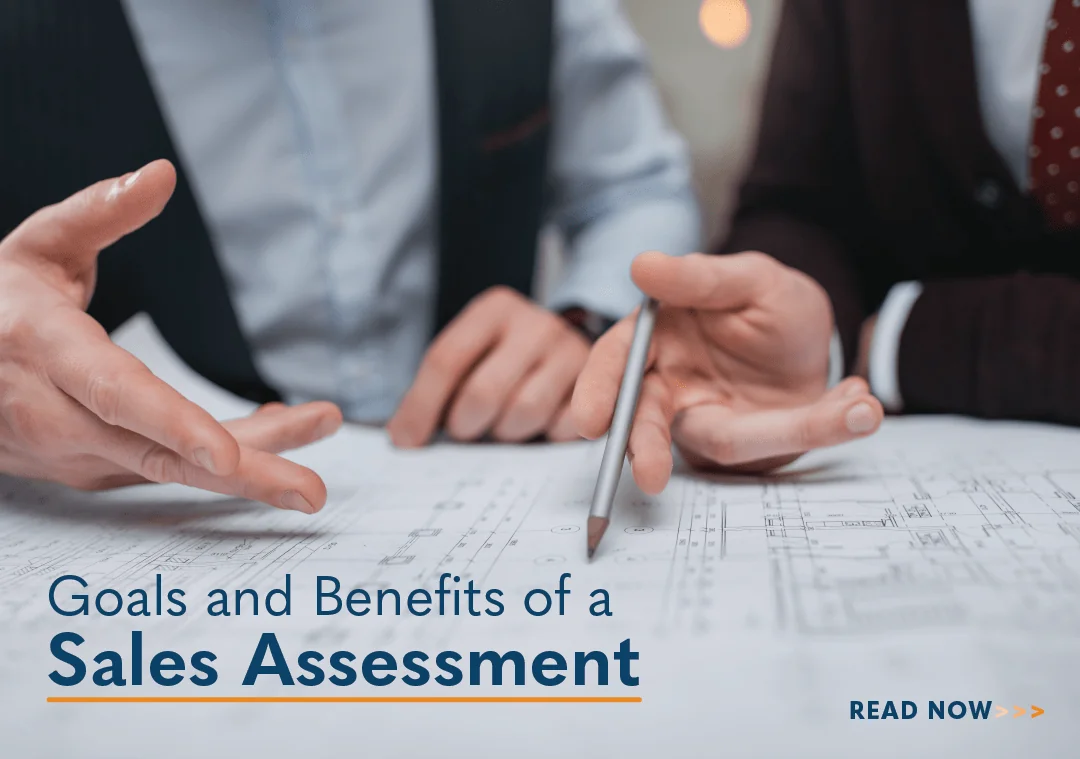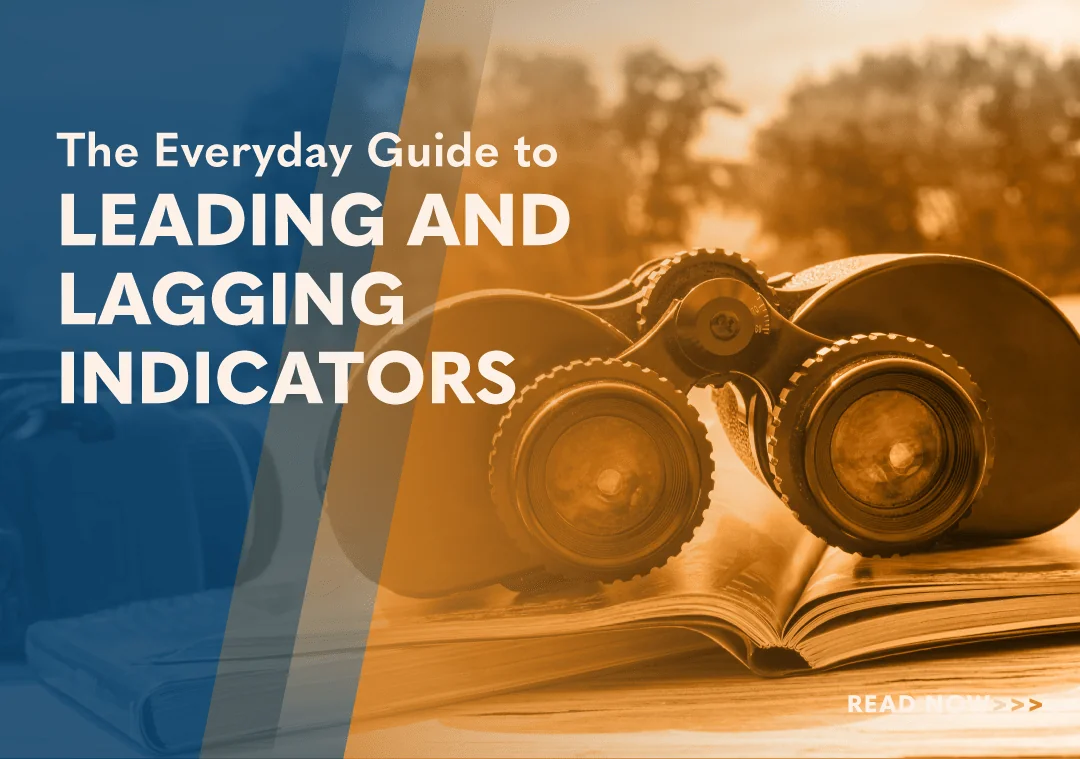Goals and Benefits of a Sales Assessment

When you hear the word “assessment,” most people think of a property appraisal. But assessments are not just for properties and taxes. As sales leaders, you are required to periodically assess our sales organization. A sales assessment is an itemized evaluation of the entire sales organization.
The purpose of a sales assessment is to uncover inefficiency, bottlenecks, and find improvement opportunities. In this article, we will explore what to include in a sales assessment, who should conduct it, and why your organization should consider a sales assessments — like Janek’s complimentary SalesAudit — on a regular basis.
A sales assessment is a detailed evaluation of all things that are relevant to the effectiveness of the sales organization. A detailed sales assessment will start with the hiring processes and follow the entire sales process — from lead to opportunity or deal to closed won — all the way to servicing customers, account management and how canceled customers are handled. There are two primary areas you will want to consider: people and processes.
The sales assessment measures both qualitative and quantitative data on people and processes. The easy part of the assessment is to look at the numbers in the CRM to measure closing rates and client lifetime value. The more difficult aspect of it is measuring the qualitative aspects of your sales team. This requires time shadowing sales reps in the field or listening to recorded calls or presentations online. Both qualitative and quantitative measurements are needed to have a thorough view of the entire sales process.
Most organizations share a similar goal in 2024: increase revenue. However, many firms are creating sales forecasts for next year based on inefficient sales processes. The best way to improve sales is to fully understand what is currently working well and what can be improved.
That is the purpose of a sales assessment. It is critical step for organizations looking to improve sales performance without just increasing the marketing budget or growing headcount. A detailed assessment will provide:
Goals
- Improve overall sales performance
- Create benchmarks
- Document best practices
Benefits
- Improve profitability
- Maximize client value
- Identify leakage areas
QuotaPath’s 2024 Compensation Trends Report revealed that 91 percent of sales leaders reported that their companies missed 2023 sales targets. Most will miss their sales goals not because the target is too high, but because they focused on the wrong things. A sales assessment will clarify your vision and allow you to incrementally improve sales outcomes.
Consider this: Achieving a 50 percent sales increase within a year typically demands a hefty boost in the marketing budget. Yet, through a thorough sales audit, identifying and enhancing just five areas by a modest 10 percent each can lead to 50 percent revenue gain. It’s akin to the age-old adage, “How do you eat an elephant? One bite at a time.” A sales audit facilitates bite-sized improvements that collectively lead to substantial overall growth.
The four primary revenue drivers that should be analyzed as part of your sales process include:
- Volume: the number of opportunities that enter your pipeline and the number that close.
- Velocity: measures the time it takes to convert a lead into a client.
- Value: the revenue from each client.
- Conversion: the ratio of leads to clients.
These four revenue drivers have an exponential impact on revenue and deserve careful scrutiny. Uncovering inefficiencies with these four will allow you to solve problems that are negatively impacting revenue. An assessment will also help you prioritize which areas to work on first.
Most companies focus on increasing volume and velocity. They look at the health of their pipeline and how many opportunities exist at each stage of the sales cycle. Volume and velocity organizations focus on adding more top-of-funnel opportunities. The mentality is, “If it’s getting twice as hard to sell, we will increase headcount and marketing budget to bring more leads into the pipeline.”
In our experience, most companies are losing opportunities early in the sales cycle. In 2021, Outreach found that 37 percent of missed conversion expectations are attributable to top-of-funnel inefficacy. This is often caused by weak prospecting skills, poor appointment setting, or inefficient follow-up.
Even with a strong tech stack with robust automation and integrated AI, the problem is not improving. A perfect tech stack won’t solve the problems outlined above. A sales assessment will discover skills gaps and allow leadership to rectify the issue, instead of allowing the problem to silently undermine success.
In addition to finding skill gaps, an assessment will provide insights into where the leakage is occurring. For example, when the sales rep is handling a new lead, did they get ahead of themselves and skip the discovery call and jump right into the presentation. If the sales team is missing or skipping steps in the sales process, you want to correct these inefficiencies prior to increasing the marketing budget to generate more leads. Without a thorough assessment, your team will just be guessing and any increase in the marketing budget will be wasted.
Another key benefit of a sales assessment is that it will ensure every salesperson’s interaction with potential clients is consistent. Sales leaders can create the most detailed sales playbooks on paper, but if it is not followed, results suffer. This is especially important in relation to a post-COVID world that relies more on remote sellers interacting virtually.
Consistency creates predictability. Without consistency, sales forecasts by even the strongest sales leaders are educated guesses at best. This inconsistency is the primary reason companies miss their sales goals. The sales audit will uncover those leakage areas and incrementally improve sales results for the entire organization.
The third core revenue driver to audit is value. When you analyze value, you can see what is happening that is affecting the deal size and client lifetime value. Not all customers are equal in value, which is why an Ideal Customer Profile (or ICP) should be identified.
Are you chasing every potential company in the market? That’s expensive and inefficient. Targeting the ICP allows a sales team to invest more time with high-value clients. Sometimes sales teams lose focus trying to hit a sales target and provide discounts or free trials when they would be better served to focus on their ICP. Without auditing the value of clients, it’s difficult to verify the team is alignment with the company’s value drivers.
The final revenue driver to audit is conversion. This seems obvious but it can be overlooked because weakness in any area of the sales process has a negative impact on conversions. That is why conversion must be scrutinized from initial prospecting efforts to discovery calls, to presentation and closing.
Each step in the sales process is a conversion opportunity. It’s important to uncover how deal size impacts closing ratio as well. Is the team really good at closing lower value deals but missing on the bigger opportunities? Very often companies have one or two missed conversions opportunities in their CRM that would have transformed the year’s final revenue results. You don’t want to miss those opportunities next year, which is why a sales audit is critical.
A sales assessment is not just about numbers, but you must understand the numbers if you want to improve results. Other areas your organization could audit include the hiring process, the compensation plan, the technology stack, social selling on LinkedIn, and leveraging sales content to move the sales forward. You will want to prioritize based on the low-hanging fruit. A detailed sales audit will provide insights on what areas you can achieve the biggest wins.
Creating a sales audit requires time and planning. These are two major obstacles to why many companies skip sales audits altogether. But if you want increased efficiencies, improved profits, and happy customers, a sales audit is a necessary exercise. In our experience we’ve found an external auditor brings a fresh perspective and prevents any shady behaviors when reporting the numbers. External sales audits also ensure ethical reporting of sales numbers and accurate sales reports.
If you have performed internal sales audits in the past and sales have plateaued, an external audit may be the next option. Most companies are aware when sales is underperforming, but figuring out the how-to correct it can be a challenge. In addition, your company may have transitioned to a virtual or hybrid sales environment and lack baseline best practices to gauge performance. In which case an external audit would be helpful.
Regardless, if your sales audit is conducted internally or externally, it will provide unique insights into your sales operation. Many organizations combine both quantitative and qualitative data to evaluate what is working and what needs improvement. Sales is constantly evolving, and a complex process impacted by a wide range of factors such as market conditions, buyer behaviors, and sales enablement strategies. If your sales organization has not recently been audited, the time is now.
We are thrilled to offer SalesAudit, a self-guided assessment tool popular in sales organizations seeking to take their performance to the next level. This innovative tool furnishes a detailed benchmark report, pinpointing precise areas for improvement and delivering tailored recommendations ready for immediate implementation — all at no cost to users. The audit takes approximately 20-30 minutes to complete, and the results are easy to share.
Click here to take the SalesAudit today and share the tool with other sales leaders in your network.
Editor’s Note: The article, first published in November 2021, was revised to improve its clarity and relevance.

- Account Planning (11)
- Awards (49)
- Client Testimonial (37)
- Personal Branding (19)
- Podcast (11)
- Research (70)
- Sales Career Development (87)
- Sales Coaching (156)
- Sales Consulting (137)
- Sales Culture (170)
- Sales Enablement (354)
- Sales Leadership (109)
- Sales Management (248)
- Sales Negotiation (16)
- Sales Prospecting (125)
- Sales Role-Playing (18)
- Sales Training (235)
- Selling Strategies (263)
- Soft Skills (70)
- Talent Management (94)
- Trusted Advisor (27)
- Virtual Selling (49)
- Webinar (9)


























